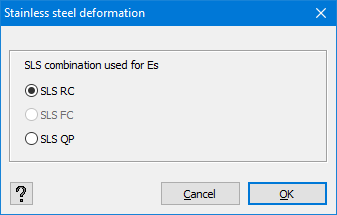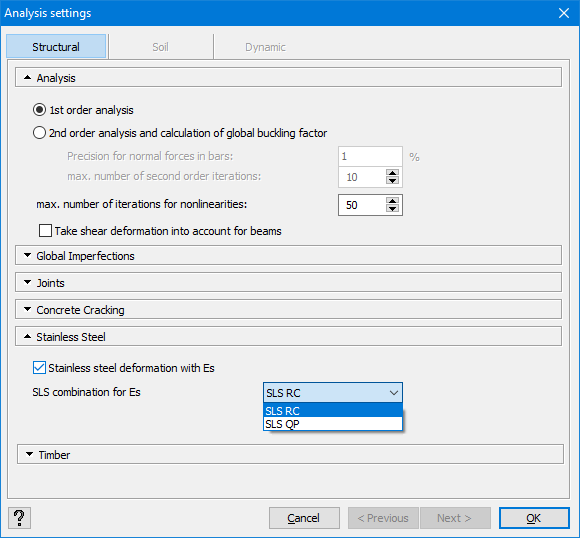To assess a structure (whether it is sufficiant or not), the following steps must be followed in sequence:
- Schematising the construction
- Determining the internal forces and moments (= global analysis)
- Checking the cross-sections (= design):
- Strength
- Stability
- Stiffness
The explanation below covers the design of steel.
In Diamonds
Strength and stability verification
The principle for verifying stainless steel is the same as for carbon steel (EN 1993-1-4 must be seen as an addition to EN 1993-1-1).
Only some parameters have a different value, or some additional formulas need to be checked in comparison to EN 1993-1-1. The table below gives an overview of the differences between carbon steel and stainless steel.
Notes:
- In Section Utility it is possible to compose custom sections from stainless steel. If you’re interested in the secant deformation, make sure the custom section is mainly composed of stainless steel. Other materials (with different material behaviour/ modulus of elasticity) will affect the stresses and thus the calculation of the secant modulus (also see section about deformations further in this article).
- It is possible to run a thermal analysis
 on cross-sections in stainless-steel, but it is not (yet) possible to do a steel verification of stainless steel in case of fire
on cross-sections in stainless-steel, but it is not (yet) possible to do a steel verification of stainless steel in case of fire  .
. - A connection verification (PowerConnect) of elements in stainless-steel is not supported.
Deformation
Because stainless steel is a non-linear material, the modulus of elasticity depends upon the stress level in the cross-section. There for EN 1993-1-4 §4.2 (5) states that deflections should be calculated using the secant modulus at the stress level (SLS state).
EN 1993-1-4 uses the Ramberg-Osgood model to calculate the secant modulus. As does Diamonds.
- Diamonds will calculate the secant modulus in each mesh node as the minimum value of the secant modulus along the strong and the weak principal axis of the cross-section.
- This will result in different secant moduli along the length of the member. The secant deflection is obtained by solving an integral over the length of the member.
So, the steps to calculate the deformations in stainless steel in Diamonds are:
- You run an elastic analysis
 .
.
This results in a deformation calculated with the modulus of elasticity defined in EN 1993-1-4 §2.1.3 (which are included in the Diamonds material library).
As said before, this deflection is not always accurate. - Either
- Calculate the secant deformation
 .
.
Choose a combination. Diamonds will calculate the secant modulus using the stresses in the combination you selected. Choose the same combination as the one in which you want to verify the deformations.

- Calculate the secant deformation and redivide the internal forces
 .
.
This option does the same as option ‘a’, but it will also redistribute the internal forces using the secant moduli.

- Calculate the secant deformation
Notes:
- The secant moduli are calculated based on elastic stresses, regardless of the cross-section class of the member.
- The calculated deformation for stainless steel in Diamonds is only valid when the stresses in the cross-sections (in the selected SLS state) are below the yielding strength of the used stainless-steel quality. Diamonds doesn’t literally check this condition, because it is supposed that when the steel verification is smaller than 100%, the stress requirement is also met.
- As a simplification, EN 1993-1-4 §4.2 (9) allows calculating the variation of along the member and use the minimum value throughout its length. But for stress levels above 65% of the yielding strength, this results in very high deflections. Thus this simplification is not used in Diamonds.

